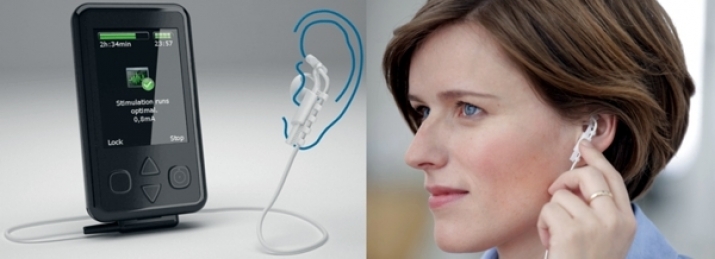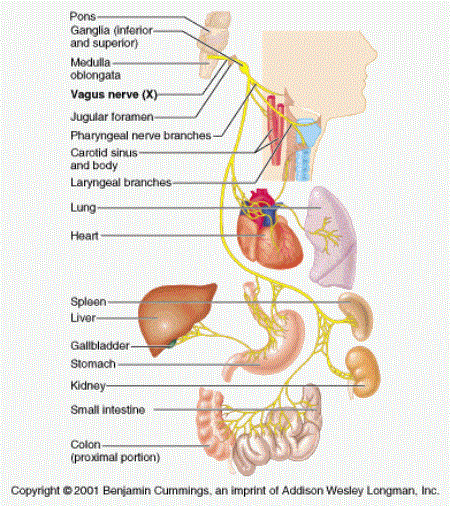NEWS
Trauma and the Vagus Nerve: When Mindfulness is Not Enough
 From psychologytoday.com
From psychologytoday.comWhile the far-reaching benefits of mindfulness meditation and related practices for improving mental and physical well-being are becoming more widely acknowledged among Buddhists and non-Buddhists alike, what is perhaps not as well understood is that mindfulness alone can be ineffective and can even cause discomfort for the practitioner in cases of deep psychological or emotional trauma.
Past traumatic experiences often leave long-lasting imprints on our minds and bodies, coloring our sensory experiences of the present, and are often accompanied by unpleasant physical manifestations that mirror one’s reaction to past traumas. The reasons are only lately being recognized by science, but largely center around our understanding of the vagus nerve, which is central to a multitude of physiological functions that underpin everything from mental and physical well-being to maintaining relationships and general happiness. Dutch psychiatrist Bessel van der Kolk, who has studied posttraumatic stress since the 1970s, emphasizes the importance of the vagus as “the critical nerve in the expression and management of emotions in both humans and animals.” (healing from the freeze)
The vagus nerve is one of 12 (or 13, depending on how they are defined) cranial nerves that emerge directly from the brain to relay information between it and other parts of the body—primarily in the head and neck. The vagus nerve, however, which is the longest nerve of the automatic nervous system, provides sensory and autonomic (parasympathetic) motor innervation to most of the organs in the chest and abdomen as well as to the neck, including the digestive system, liver, spleen, pancreas, heart, and lungs.
The functioning of the vagus nerve, which is unique to mammals, is closely tied to immune system response, and recent evidence suggests that the nerve also regulates the body’s inflammation response to disease, according to University of California, Berkeley psychologist and faculty director of the Greater Good Science Center Dacher Keltner, who describes the vagus as “one of the great mind-body nexuses in the human nervous system.” (YouTube)
“The vagus nerve wanders through your body, starting right up at the top of your spinal cord. It goes to muscles in your neck that help you nod your head, orient your gaze towards other people, and vocalize. It then goes down and helps coordinate the interaction between your breathing and your heart rate—every time you take a deep breath, your heart rate slows down . . . then it drops down to the spleen and liver and controls a lot of digestive processes,” says Keltner. “It’s this amazing bundle of nerves . . . it helps you communicate, it helps you empathize by orienting gaze . . . and, because it’s mammalian, [scientist] Steve Porges said ‘this is the love nerve in your body; it is the caretaking nerve in your body.’” (YouTube)
Given the core role of the vagus nerve, it should come as no surprise that impaired functioning can lead to a host of conditions and problems, physical, emotional, and mental—indeed, some neurological diseases actually originate in the digestive system, spreading to the brain via the vagus nerve. In such cases, even mindfulness meditation can prove ineffective or too painful for the traumatized practitioner, as van der Kolk notes: “As [the mindfulness practitioners] became silent and started to pay attention to themselves, they get overwhelmed with the physical sensations and they would flee, because being mindful means that you get confronted with your internal world.” (healing from the freeze)
However, recent studies suggest that stimulating and improving the functioning of the vagus offers significant psychological and health benefits. One study* in particular found that stimulating the vagus nerve dramatically reduced the severity of depression, while another** concluded that mindfulness meditation optimized the functional connectivity of the nerve, lowering inflammation and improving the brain's ability to manage stress and anxiety. Both studies indicate that holistic treatments can improve psychological and physical well-being, without resorting to pharmacological solutions, although the variety of treatments also depends on the type of disorder—whether the vagus is underactive or inactive, or over-reactive to ordinary stimuli.
 A variety of non-invasive technological solutions have been developed to help stimulate the vagus nerve in concert with other techniques. From implantable-devices.com
A variety of non-invasive technological solutions have been developed to help stimulate the vagus nerve in concert with other techniques. From implantable-devices.comWhile the issue remains extremely complex and there’s no “magic fix” for most people in this situation, a variety of non-invasive methods have been recommended for recalibrating the vagus nerve and dealing with the related manifestations of long-term trauma. Among them are physical re-education techniques such as acupuncture, massage, qigong, and sotai, combined with nutritional guidance, spoken therapy, and mindfulness techniques, which combined can provide hope for and genuine relief for trauma sufferers.
* Transcutaneous Vagus Nerve Stimulation Modulates Default Mode Network in Major Depressive Disorder
See more
The vagus nerve, emotions and the difficulty with mindfulness practices (healing from the freeze)
Mindfulness Meditation and the Vagus Nerve Share Many Powers (Psychology Today)
Dacher Keltner on the Vagus Nerve (YouTube)
What You Need to Know About the Vagus Nerve (mindbodygreen)
Function of the Vagus Nerve (Dr Sircus.com)















